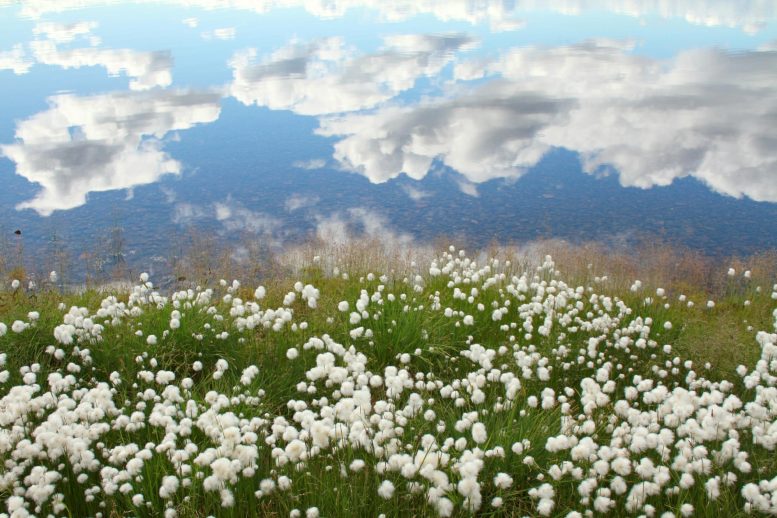
Cotton grasses on the banks of the Lower Ilerney, Russia. Credit: Alfred-Wegener-Institut / Stefan Kruse
Research shows that only ambitious climate protection measures can still save a third of the tundra.
Temperatures in the Arctic are climbing rapidly as a result of global warming. As a result, the treeline for Siberian larch forests is steadily advancing to the north, gradually supplanting the vast stretches of tundra which are home to a unique mix of flora and fauna. Experts from the Alfred Wegener Institute have now prepared a computer simulation of how these woods could spread in the future, at the tundra’s expense. Their conclusion: only consistent climate protection measures will allow roughly 30 percent of the Siberian tundra to survive until mid-millennium. In all other, less favorable scenarios, the unique habitat is projected to entirely disappear.
The climate crisis is particularly impacting the Arctic: in the High North, the average air temperature has risen by more than two degrees Celsius (3.6 degrees Fahrenheit) over the past 50 years – far more than anywhere else. And this trend will only continue. If ambitious greenhouse-gas reduction measures (Emissions Scenario RCP 2.6) are taken, the further warming of the Arctic through the end of the century could be limited to just below two degrees. According to model-based forecasts, if the emissions remain high (Scenario RCP 8.5), we could see a dramatic rise in the average summer temperatures in the Arctic – by up to 14 degrees Celsius (25 degrees Fahrenheit) over today’s norm by 2100.
“For the Arctic Ocean and the sea ice, the current and future warming will have serious consequences,” says Prof Ulrike Herzschuh, Head of the Polar Terrestrial Environmental Systems Division at the Alfred Wegener Institute, Helmholtz Centre for Polar and Marine Research (AWI). “But the environment on land will also change drastically. The broad expanses of tundra in Siberia and North America will be massively reduced, as the treeline, which is already slowly changing, rapidly advances northward in the near future. In the worst-case scenario, there will be virtually no tundra left by the middle of the millennium. In the course of our study, we simulated this process for the tundra in northeast Russia. The central question that concerned us was: which emissions path does humanity have to follow in order to preserve the tundra as a refuge for flora and fauna, as well its role for the cultures of indigenous peoples and their traditional ties to the environment?”
The tundra is home to a unique community of plants, roughly five percent of which are endemic, i.e., can only be found in the Arctic. Typical species include the mountain avens, Arctic poppy, and prostrate shrubs like willows and birches, all of which have adapted to the harsh local conditions: brief summers and long, arduous winters. It also offers a home for rare species like reindeer, lemmings, and insects like the Arctic bumblebee.
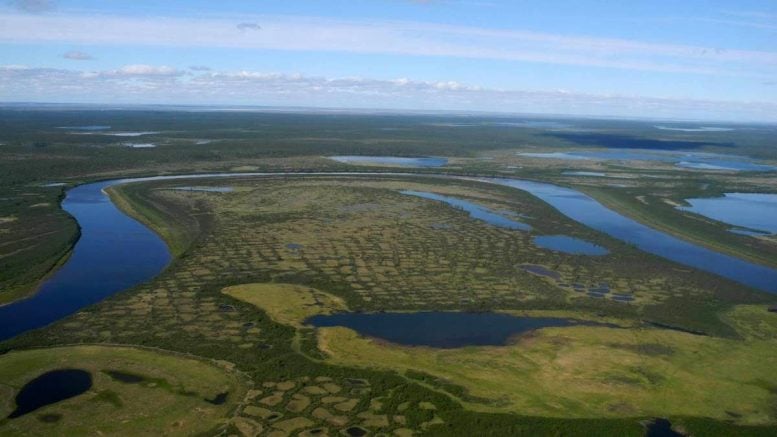
Aerial photo of open Northern forest on the Taymyr Peninsula, Siberia, (proximity of the river Chatanga) consisting of larches. In some parts of this area, the trees are growing in dense formations, but in others, one can see just very few trees. Credit: Stefan Kruse
For their simulation, Ulrike Herzschuh and AWI modeller Dr Stefan Kruse employed the AWI vegetation model LAVESI. “What sets LAVESI apart is that it allows us to display the entire treeline at the level of individual trees,” Kruse explains. “The model portrays the entire lifecycle of Siberian larches in the transition zone to the tundra – from seed production and distribution, to germination, to fully grown trees. In this way, we can very realistically depict the advancing treeline in a warming climate.”
The findings speak for themselves: the larch forests could spread northward at a rate of up to 30 kilometers (19 miles) per decade. The tundra expanses, which can’t shift to colder regions due to the adjacent Arctic Ocean, would increasingly dwindle. Since trees aren’t mobile and each one’s seeds can only reach a limited distribution radius, initially the vegetation would significantly lag behind the warming, but then catch up to it again. In the majority of scenarios, by mid-millennium less than six percent of today’s tundra would remain; saving roughly 30 percent would only be possible with the aid of ambitious greenhouse-gas reduction measures. Otherwise, Siberia’s once 4,000-kilometer-long (2,500-mile-long), unbroken tundra belt would shrink to two patches, 2,500 kilometers (1,600 miles) apart, on the Taimyr Peninsula to the west and Chukotka Peninsula to the east. Interestingly, even if the atmosphere cooled again in the course of the millennium, the forests would not completely release the former tundra areas.
“At this point, it’s a matter of life and death for the Siberian tundra,” says Eva Klebelsberg, Project Manager Protected Areas and Climate Change / Russian Arctic at the WWF Germany, with regard to the study. “Larger areas can only be saved with very ambitious climate protection targets. And even then, in the best case, there will ultimately be two discrete refuges, with smaller flora and fauna populations that are highly vulnerable to disrupting influences. That’s why it’s important that we intensify and expand protective measures and protected areas in these regions, so as to preserve refuges for the tundra’s unparalleled biodiversity,” adds Klebelsberg, who, in collaboration with the Alfred Wegener Institute, is an advocate for the establishment of protected areas.
“After all, one thing is clear: if we continue with business as usual, this ecosystem will gradually disappear.”
Reference: “Regional opportunities for tundra conservation in the next 1000 years” by Stefan Kruse and Ulrike Herzschuh, 24 May 2022, eLife.
DOI: 10.7554/eLife.75163

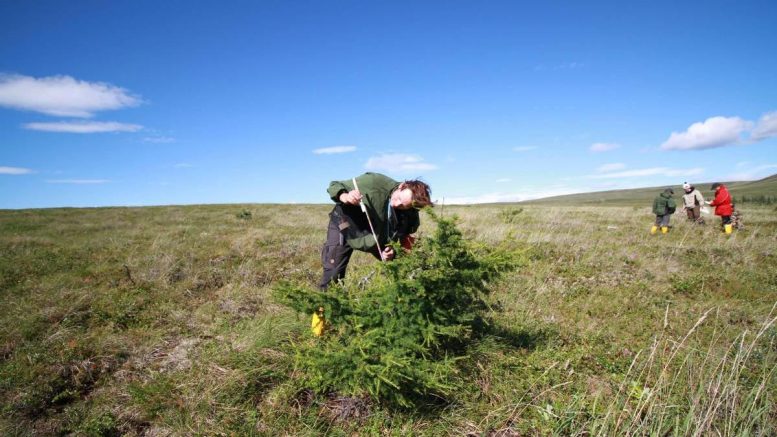
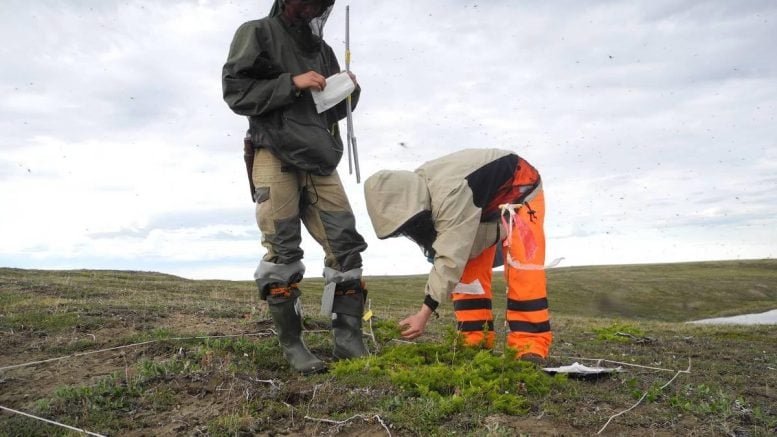
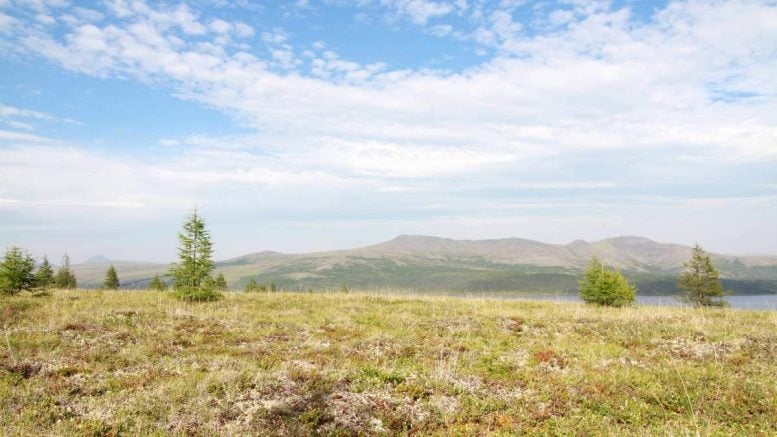
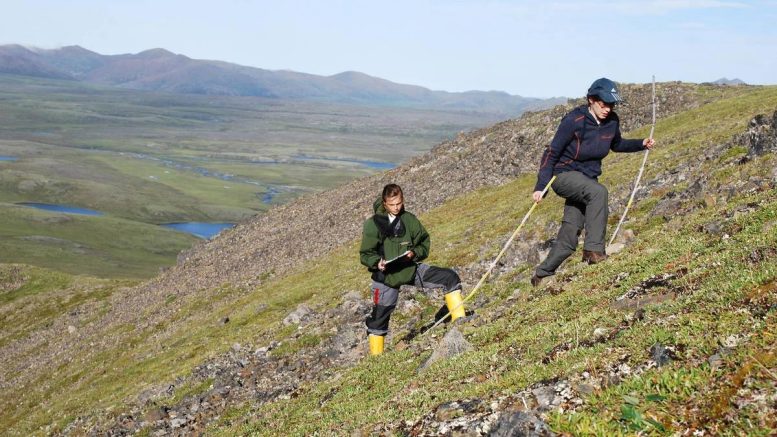
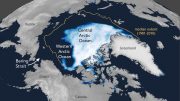


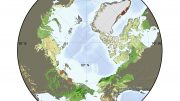

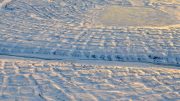
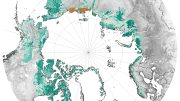
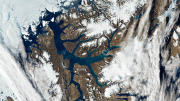
“… if the emissions remain high (Scenario RCP 8.5), we could see a dramatic rise in the average summer temperatures in the Arctic …”
Why would any responsible researcher use RCP 8.5 (Originally called Business as Usual) when it has been demonstrated that it is improbable, based on the limitations of coal and crude oil resources?
Beyond that, how do they know that their model is applicable to conditions that don’t exist today?
Lastly, there is every reason to believe that the Earth has been at least as warm, if not warmer than today, during previous interglacials. How did the current ecosystem develop if there is little hope of recovery from warming as predicted by the model used?
https://en.wikipedia.org/wiki/Eemian
Improbable? Hardly. The so-called “limitations” you allege are factually false. There is enough coal and oil to push the planet well beyond RCP 8.5 and you know it. But you’re always downplaying the dangers because of your bias. You also interject straw arguments in your claims. Models predict what is possible and the conditions do not have to “exist today”. The rest of your ignorance is evident, a warmer Earth of the past also did not have a human population of the present – which you also know but choose to ignore. The reality is a warming Earth now present a catastrophe for human civilization.
“… you know it.” I thought that only Houdini was a mind reader. You ought to put your talent to good use.
Actually I know no such thing. I trust analyses with citations over someone who only goes by initials and makes unsupported claims. You might look at the following:
https://judithcurry.com/2018/11/24/is-rcp8-5-an-impossible-scenario/
I downplay the dangers because I think that the quality of the hand-waving leaves a lot to be desired.
You said, “You also interject straw arguments in your claims.” How about citing an example instead of just another unsupported claim?
You said, “… a warmer Earth of the past also did not have a human population of the present – which you also know but choose to ignore.” And I ignore it for good reason; it is a non sequitur. Temperature is temperature, and it isn’t coming from the hot breath of humans.
You then go on to breathlessly say, “The reality is a warming Earth now present [sic] a catastrophe for human civilization.” That sounds like YOUR bias. You present no evidence, just your opinion.
Too bad the article didn’t mention the extreme danger from the carbon and methane that will be released from the thawing permafrost. That’s enough to push the planet to total extinction of almost all forms of life.
Well, when writing things, decisions have to be made about what to include and what to leave out. It is difficult to satisfy everyone. Yes, the CO2 and CH4 are concerns. But, as to whether or not it will be significant is difficult to predict because there is no agreement on the climate sensitivity to a doubling of CO2.
“That’s enough to push the planet to total extinction of almost all forms of life.” There you go again, “… always exaggerating the dangers because of your bias.” Where is the extraordinary evidence for your extraordinary claim?
David Attenborough remarked in one of his TV programs that the topics represent about 1% of the surface of the Earth, yet holds about 50% of the total species. Yet, you make the unsupported claim that increasing temperatures will result in the “total extinction of almost all forms of life.” Pointing out that the Arctic latitudes with low biological diversity are warming the fastest of all areas, and there is little warming in the tropics, do you see the contradiction in your claims?